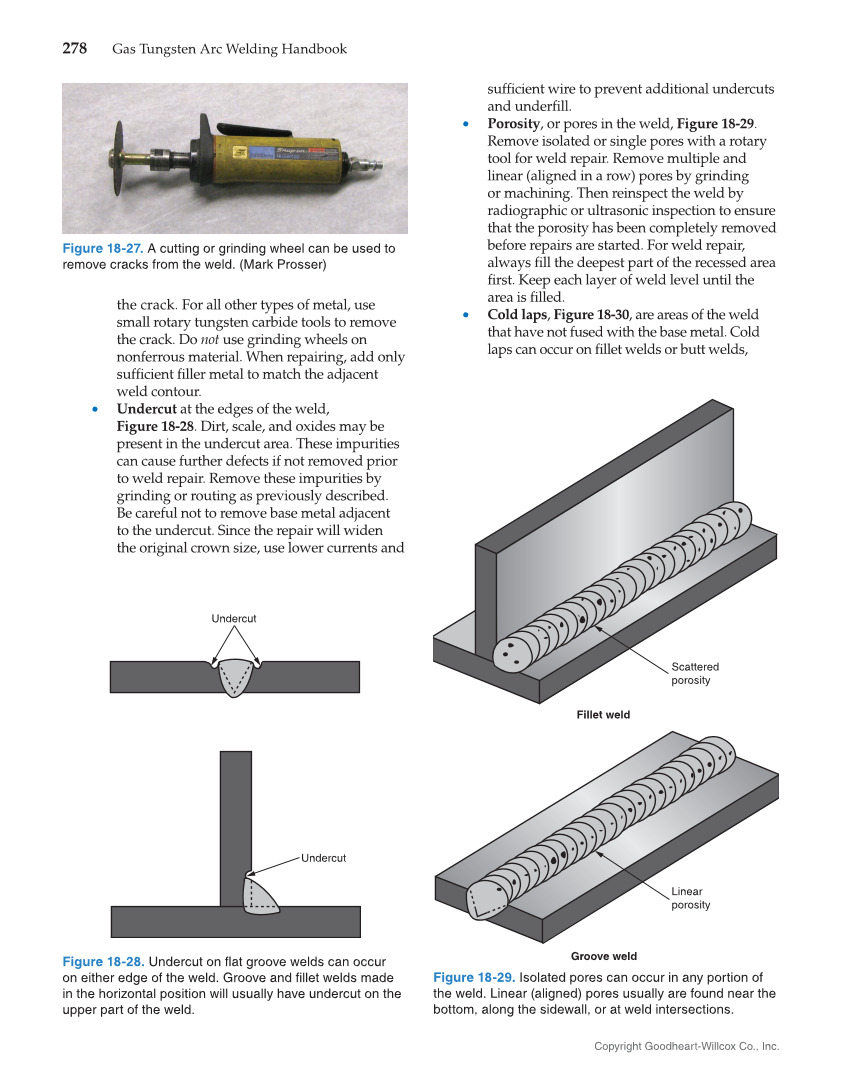Copyright Goodheart-Willcox Co., Inc. 278 Gas Tungsten Arc Welding Handbook the crack. For all other types of metal, use small rotary tungsten carbide tools to remove the crack. Do not use grinding wheels on nonferrous material. When repairing, add only suffi cient fi ller metal to match the adjacent weld contour. • Undercut at the edges of the weld, Figure 18-28. Dirt, scale, and oxides may be present in the undercut area. These impurities can cause further defects if not removed prior to weld repair. Remove these impurities by grinding or routing as previously described. Be careful not to remove base metal adjacent to the undercut. Since the repair will widen the original crown size, use lower currents and suffi cient wire to prevent additional undercuts and underfi ll. • Porosity, or pores in the weld, Figure 18-29. Remove isolated or single pores with a rotary tool for weld repair. Remove multiple and linear (aligned in a row) pores by grinding or machining. Then reinspect the weld by radiographic or ultrasonic inspection to ensure that the porosity has been completely removed before repairs are started. For weld repair, always fi ll the deepest part of the recessed area fi rst. Keep each layer of weld level until the area is fi lled. • Cold laps, Figure 18-30, are areas of the weld that have not fused with the base metal. Cold laps can occur on fi llet welds or butt welds, Figure 18-27. A cutting or grinding wheel can be used to remove cracks from the weld. (Mark Prosser) Undercut Undercut Figure 18-28. Undercut on flat groove welds can occur on either edge of the weld. Groove and fillet welds made in the horizontal position will usually have undercut on the upper part of the weld. Linear porosity Scattered porosity Fillet weld Groove weld Figure 18-29. Isolated pores can occur in any portion of the weld. Linear (aligned) pores usually are found near the bottom, along the sidewall, or at weld intersections.
